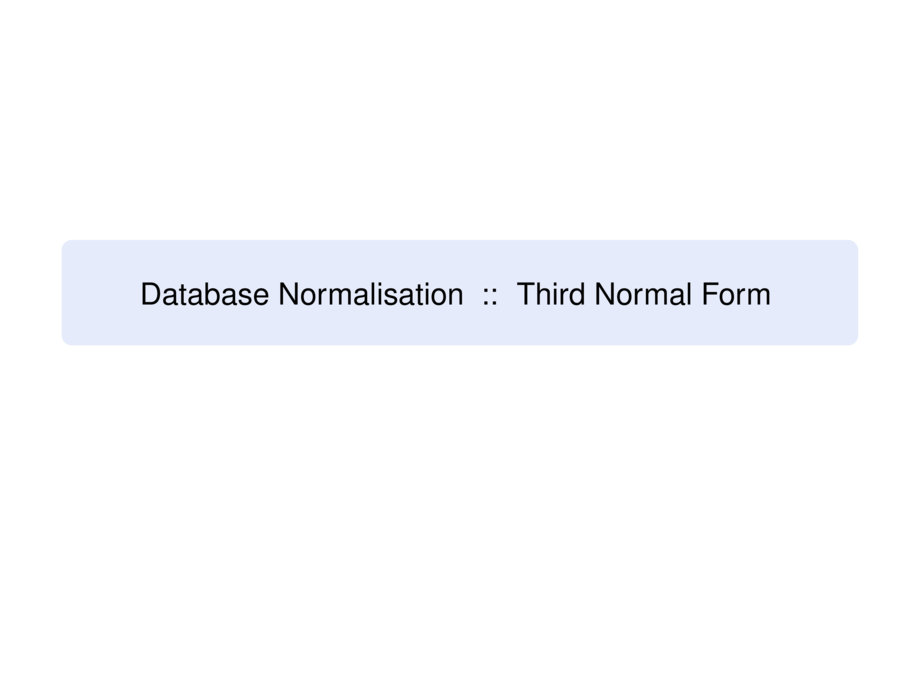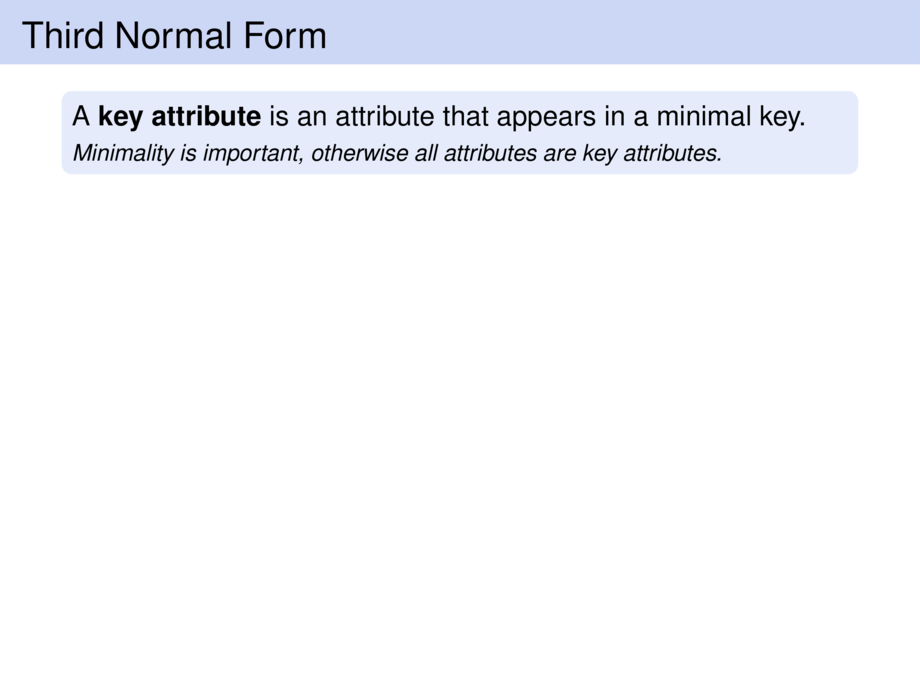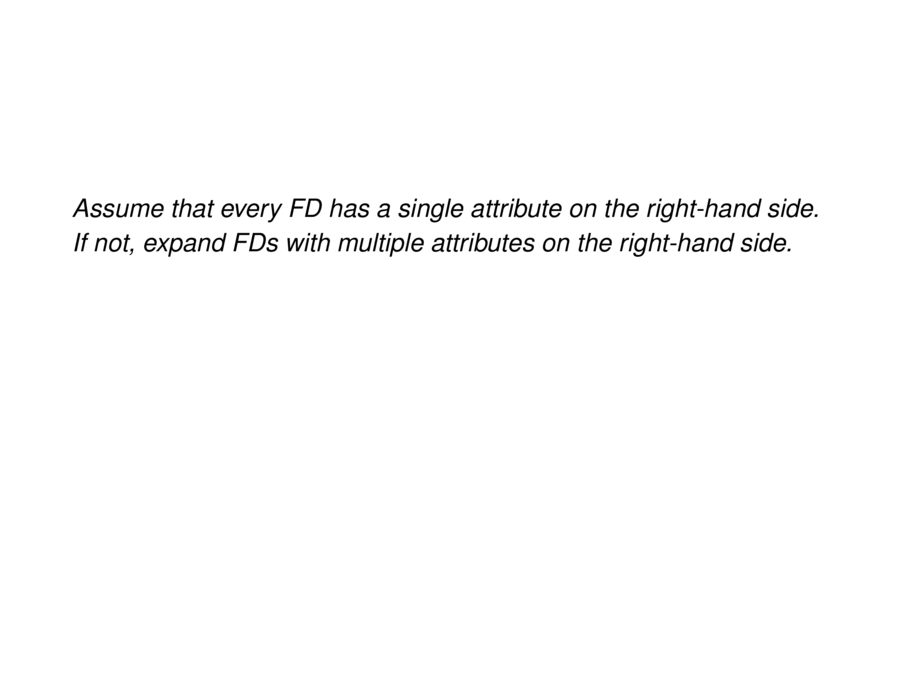



































































































173/291
\begin{frame}
\frametitle{Third Normal Form}
\begin{block}{}
A \emph{key attribute} is an attribute that
appears in a minimal key.\\
\remark{Minimality is important, otherwise all attributes are key attributes.}
\end{block}
\smallskip
\pause
\textit{{\small Assume that every FD has a single attribute on the right-hand side.\\
If not, expand FDs with multiple attributes on the right-hand side.}}
\pause
\begin{block}{Third Normal Form (3NF)}
A relation $R$ is in \emph{Third Normal Form (3NF)} if and only if
every FD $A_1, \dots, A_n \to B$
satisfies at least one of the conditions:
\pause
\begin{itemize}
\item $\{\, A_1, \dots, A_n \,\}$ contains a key of $R$, or
\item the FD is trivial (that is, $B \in \{\, A_1, \dots, A_n \,\}$), or
\pause
\item \alert{$B$ is a \emph{key attribute} of $R$.}
\end{itemize}
\end{block}
\remark{The only difference with BCNF is the last condition.}
\smallskip
\pause
\begin{goal}{}
Third Normal Form (3NF) is slightly weaker than BCNF:\\
If a relation is in BCNF, it is automatically in 3NF.
\end{goal}
% In some rare scenarios,
% a relation cannot be transformed to BCNF while preserving all FDs.
% With 3NF the transformation is always possible.
\end{frame}

